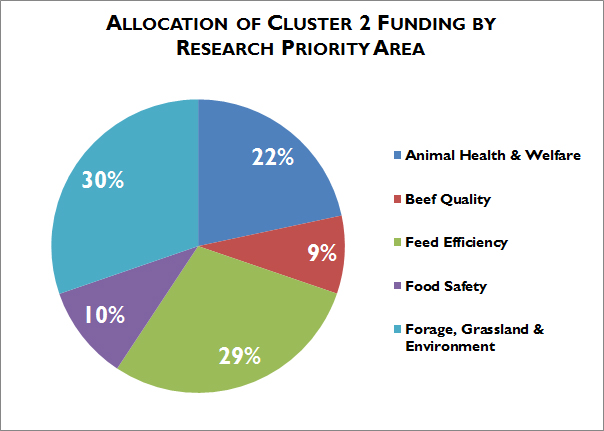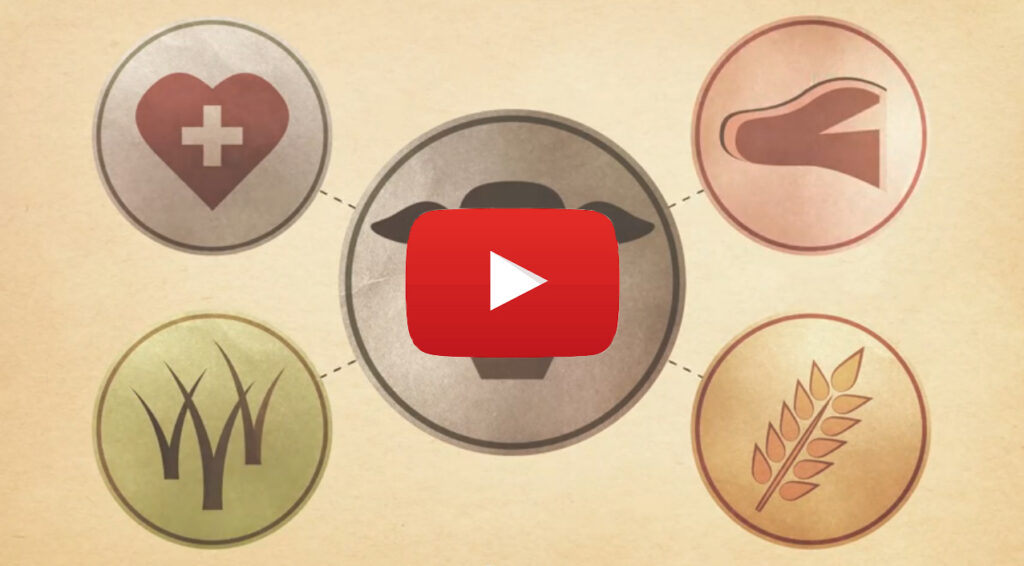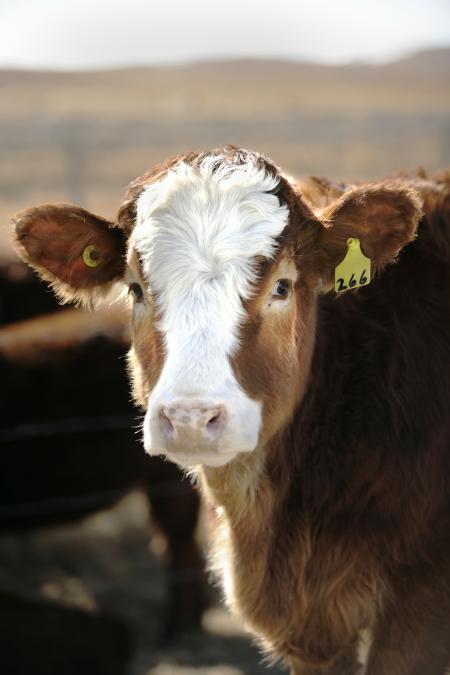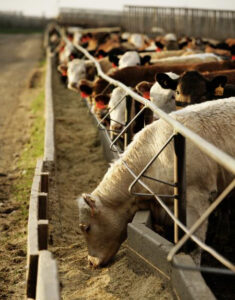2014: BCRC's Top 10 Blog Articles
Remarque : cette page web n’est actuellement disponible qu’en anglais.
This past year we published 74 blog posts that offered production tips, science-based perspectives on issues in the media, highlighted new beef, cattle and forage research projects and results, and announced other exciting initiatives. Of those, these were the top 10 most popular:
10. Next time you process cattle, pull tail hairs
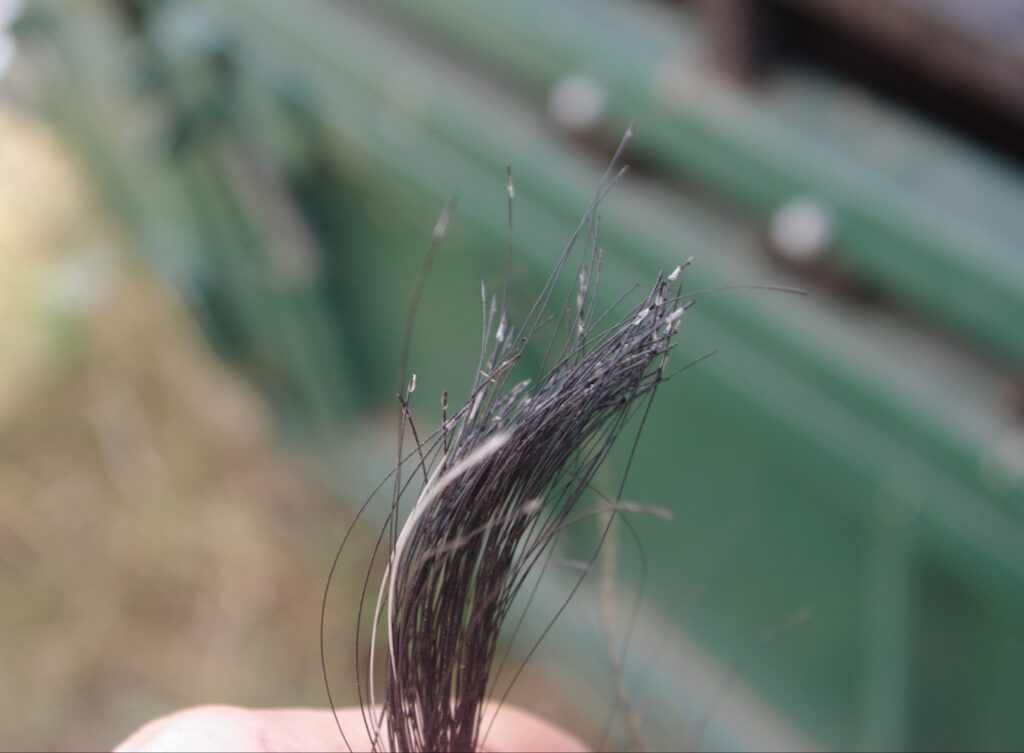
Cow-calf producers, both purebred and commercial, can use the information gained by pulling and DNA testing their animals’ tail hairs in several ways. Whether it is sire verification, trait selection, or testing for genetic defects, all can be useful management tools.
This article explained the value of DNA testing with detailed instructions for producers.
9. Details of 26 new research projects funded by Canada’s Beef Science Cluster
The second Beef Science Cluster is well underway with projects that will work to maintain or improve the competitiveness and sustainability of the Canadian beef industry. Like the first Cluster, the second Cluster will lead to several benefits:
- Maintenance or improvements in production competitiveness
- Support for science-based policy, regulation and trade
- Provide public education and advocacy information
- Support of the Canadian Beef Advantage
- Maintenance of professional capacity to ensure that research facilities with experienced professionals are in place to respond to emerging or critical issues in an expedient manner and conduct long-term research
- Greater uptake of research knowledge and technologies by industry
Follow the link for details on each of the projects currently underway.
8. Get to know us in 90 seconds
You know us, but many of your friends and neighbours might not. To introduce ourselves to them, we developed a short little video that explains who we are and what we do. Feel free to share it and let other producers know that they can benefit from resources funded by the National Check-off and Canada’s Beef Science Cluster like you do!
7. Announcing the mentors in the beef researcher mentorship program
This year the BCRC proudly announced the launch of the Beef Research Mentorship program. The goal of this pilot program is to enable researchers to gain practical understanding of the Canadian beef industry and facilitate networking and collaboration among beef researchers, producers, and extension specialists.
Meet the inaugural mentees and the industry mentors they’re paired with:
6. Is it OK to use snow as the only water source for cattle?
Last winter we received an email from a reader asking “Is it possible to winter cattle only with snow with no negative effects?” It is possible, but depends on your location, management practices, and the snowfall in your area.
Follow the link for more information and some critically important things you’ll need to remember.
5. Calculator: What is the value of preconditioning calves?

Preconditioned calves have a lower cost of gain at the feedlot because the animals’ stressors (weaning, vaccination, transport, etc.) are spread out. But does it pay YOU to precondition your calves? Probably.
Try the calculator we developed this year to easily see whether a 30, 45 or 60 day preconditioning program gives you a net profit.
4. Measured changes in the quality of Canadian beef: NBQA video
The National Beef Quality Audit (NBQA) evaluates the carcasses information necessary to enhance the quality and safety of Canadian beef while increasing the profitability of the Canadian beef industry.
Findings of the most recent NBQA are explained in a 6 minute video, which shows the various improvements in the quality of Canadian beef thanks to efforts made by Canadian beef producers.
3. Hot air doesn’t just come from cattle

During the summer a scientific journal article was published that made inferences about Canada’s beef industry, and suggested that beef production had a very large environmental footprint. We responded.
Our response goes through some of the biases and assumptions made in that paper and explains the single most meaningful diet-related action that all Canadian consumers can take for the benefit of the environment.
2. 5 ways to prepare to meet future sustainable beef requirements
With more and more consumers and retailers demanding ‘sustainable’ beef production, beef producers are left with questions as to what ‘sustainable beef’ means and how they can meet that demand.
This guest post by the CCA’s Manager of Environmental Affairs suggests producers can prepare to meet demands by
- continuing to do they good job they’re already doing,
- making continual improvements,
- capturing what they do,
- becoming a part of the conversation about sustainability, and
- talking to the public about beef production.
1. How much feed and water are used to make a pound of beef?
The beef industry is often criticized for being environmentally harmful or unsustainable, but the amount of resources that the industry uses are often overstated, and environmental benefits are often overlooked. In many ways, production is getting more efficient all the time.
When producers are armed with sound, science-based production knowledge, they are better able to counter misconceptions and explain how and why they raise cattle.
See the facts on the amount of feed and water beef cattle use
Any requests for 2015?
We’re working hard to make BeefResearch.ca interesting and useful to you and your operation, but we need to hear from you. Feedback helps us deliver the information cow-calf producers, feedlots, veterinarians, meat packers and other industry players across the country need to make informed decisions to profitably and responsibly produce top quality Canadian cattle and beef. Don’t hesitate to ask questions and make comments in the space below or email us at info@beefresearch.ca.
More on BeefResearch.ca
Remember there is more than just blog articles on BeefResearch.ca! Take a look at overviews and videos on all kinds of topics, or summaries of individual research activities. To raise your beef IQ, start by clicking one of these:
- animal health and welfare
- beef quality
- environment
- feed grains and feed efficiency
- food safety
- forage and grasslands
- other topics
Click here to subscribe to the BCRC Blog and receive email notifications when new content is posted.
The sharing or reprinting of BCRC Blog articles is welcome and encouraged. Please provide acknowledgement to the Beef Cattle Research Council, list the website address, www.BeefResearch.ca, and let us know you chose to share the article by emailing us at info@beefresearch.ca.
We welcome your questions, comments and suggestions. Contact us directly or generate public discussion by posting your thoughts below.
